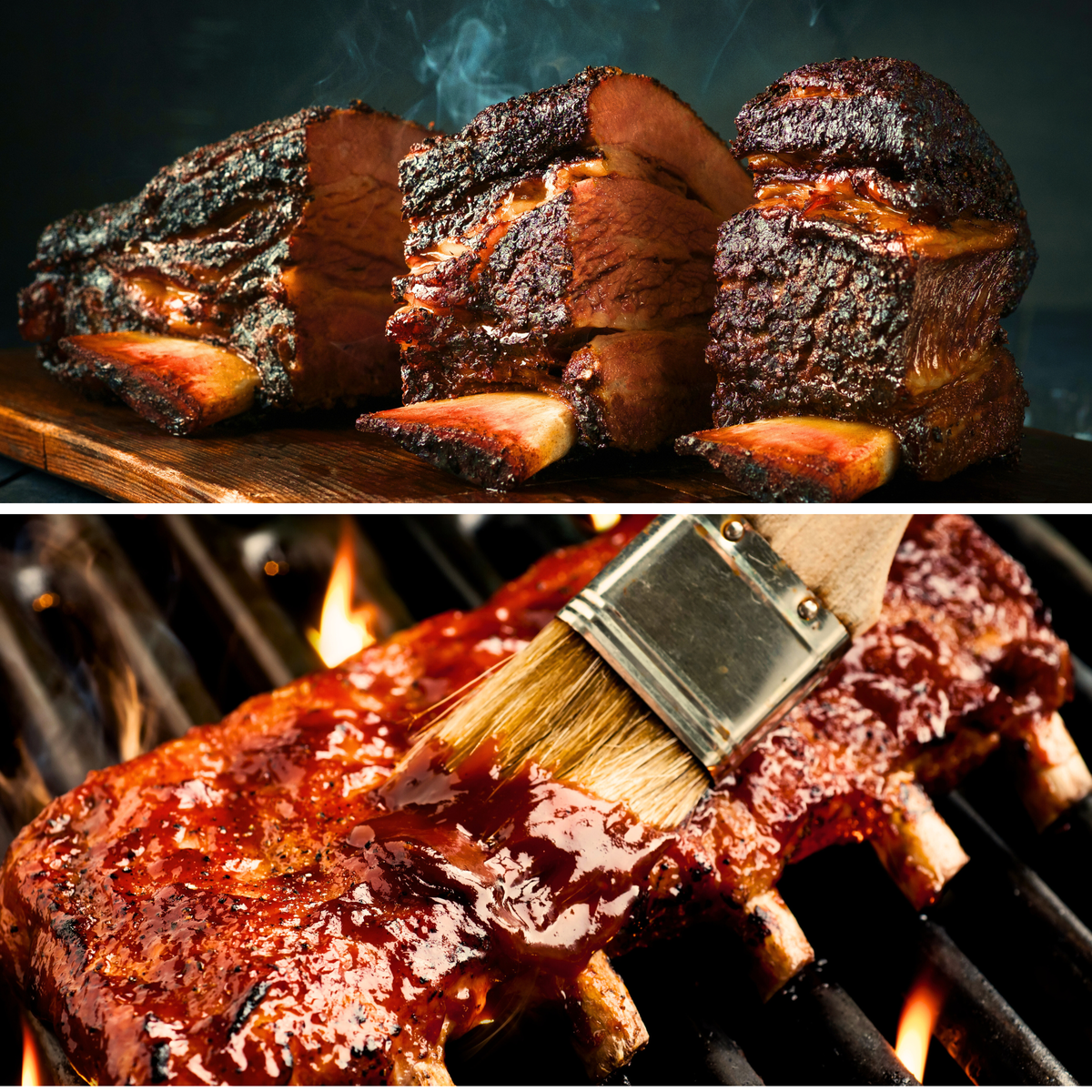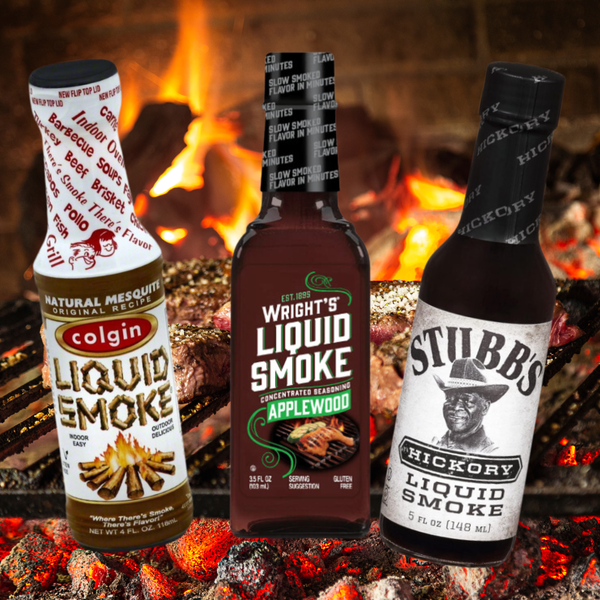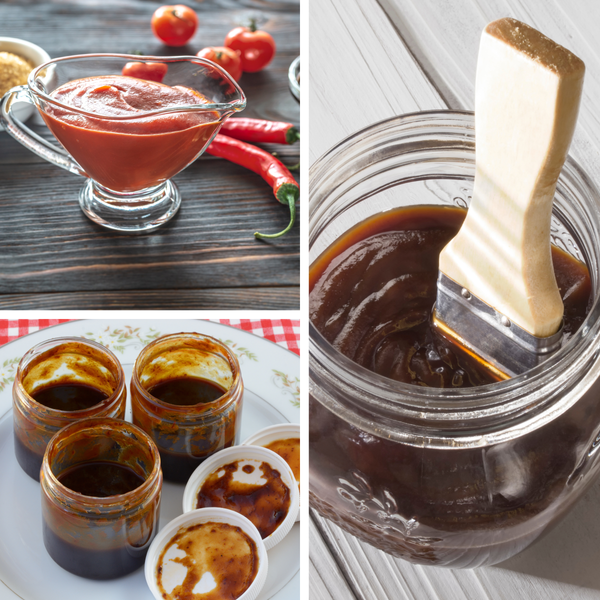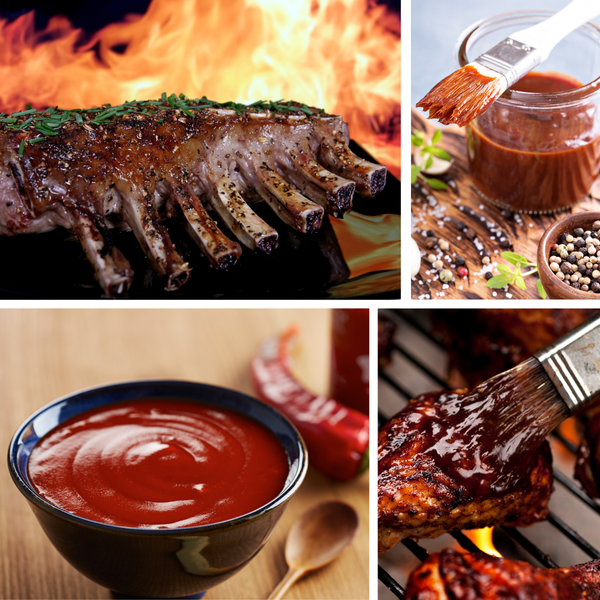Barbecue enthusiasts and pitmasters alike are always on the quest for the perfect rib recipe. The 3-2-1 method has become a secret weapon for many, promising tender, fall-off-the-bone ribs that could win any competition. In this comprehensive guide, we'll delve into the intricacies of this method and how you can apply it to your next barbecue session.
Key Takeaways:
- Understand the 3-2-1 method and how it applies to cooking competition-level ribs.
- Learn the importance of choosing the right type of ribs and preparing them with the perfect rib rub and barbecue sauce.
- Discover tips and tricks for maintaining the ideal smoker temperature and finishing the ribs to achieve that coveted smoky flavor and tender texture.
The 3-2-1 Method Explained
What is the 3-2-1 method of competition ribs, you ask? It's a foolproof smoking technique that breaks down the cooking process into three time-based segments. The first phase involves smoking the ribs directly on the grill for three hours, followed by two hours of cooking the ribs wrapped in foil, and finally, one hour of finishing them up with sauce, unwrapped, over indirect heat. This method ensures that your ribs are not only infused with a deep smoky flavor but also attain that desirable tender texture.
Selecting the Right Ribs
The journey to amazing ribs starts with selecting the right cut. Whether you prefer baby back ribs, St. Louis style ribs, or spare ribs, the key is to look for racks with more meat and less excess fat. This ensures that the ribs cook evenly and provide a substantial bite. Before you cook ribs, it's essential to remove the membrane on the bone side to allow the smoke and seasonings to penetrate the meat more effectively.
Preparing Your Ribs
Once you've chosen your rack of ribs, it's time to prepare them for the smoker. Begin by patting the ribs dry with a paper towel. Then, apply a generous amount of rib rub, ensuring that the meat side is thoroughly seasoned. Some pitmasters also like to slather their ribs with mustard powder or apple juice before applying the rub to help the seasonings adhere better and to add an extra layer of flavor.
Crafting the Perfect Rib Rub
A well-crafted rib rub is crucial for seasoned ribs that stand out in a competition. A blend of dark brown sugar, kosher salt, and a mix of spices like smoked paprika, garlic powder, and onion powder can create a flavorful crust on the ribs. For those who like a bit of heat, adding cayenne pepper or chili powder can provide a nice kick.
Making Your Own BBQ Sauce
While there are many commercial barbecue sauces available, creating your own BBQ sauce allows for personal preference to shine through. A good sauce pan, some ketchup, vinegar, brown sugar, and a selection of spices can yield a sauce that complements the smoky flavor of the ribs without overpowering it. Remember to keep the sauce warm and ready for the last hour of the cooking process.
Setting Up Your Smoker
To smoke ribs like a pro, maintaining a consistent smoker temperature is key. Aim for a low temperature, around 225°F, which is ideal for the slow cooking process that ribs require. Use wood chunks or wood chips to generate heavy smoke, and remember to preheat your smoker to achieve an airtight seal before placing the ribs inside.
The First Phase: Smoking the Ribs
In the first three hours, the ribs should be placed meat side up on the grill grates. This is when the ribs absorb most of the smoky flavor. It's important to resist the temptation to open the smoker too often, as this can cause fluctuations in the smoker temperature and extend the cooking time.
The Second Phase: Foil Wrapped Ribs
After the initial smoking phase, wrap the ribs in heavy duty aluminum foil. This creates an environment that allows all the juices to braise the ribs, making them incredibly tender. Some pitmasters add a splash of apple juice or butter inside the foil for added moisture and flavor.
With the ribs tightly crimped in foil, return them to the smoker for two hours. This is when the magic happens, and the ribs transform from tough to tender. The foil ensures that the ribs rest in their own juices, breaking down the connective tissues without drying out.
Finishing with Sauce
In the last hour, remove the ribs from the foil and place ribs directly on the grill once more. This is the time to brush them with your barbecue sauce, allowing it to caramelize and form a sticky, flavorful coating. Be careful not to apply the sauce too early, as the sugars can burn and turn bitter.
The Final Touch: Letting the Ribs Rest
Once the ribs have completed their journey through the 3-2-1 method, it's crucial to let them rest. This allows the meat to reabsorb all the juices, ensuring that each bite is succulent. A rest period of about 10-15 minutes should suffice, but the longer the ribs rest, the more the flavors meld together.
Cutting and Serving Your Ribs
When it's time to serve, use a sharp knife to slice between the individual ribs. If you've followed the 3-2-1 method correctly, the ribs should have a beautiful smoke ring and the meat should pull away from the bone cleanly. Serve the ribs with extra barbecue sauce on the side for those who prefer their ribs saucy.
Troubleshooting Common Issues
Even with a method as reliable as the 3-2-1, sometimes things can go awry. If the ribs are not tender after the foil phase, they may need more time wrapped up. Conversely, if they're falling apart too much, reduce the time in foil during your next cook. Remember, the 3-2-1 method is a guideline, and adjustments can be made based on the size and type of ribs or personal preference.
Enhancing Your Rib Game
To further enhance your rib game, consider experimenting with different types of wood for smoking. Each type of wood imparts a unique flavor, from the sweetness of applewood to the robustness of hickory. Additionally, try incorporating different liquids into the foil, such as beer, wine, or even cola, for an extra layer of complexity.
Crafting More Ribs Recipes for Your Repertoire
Expanding your culinary horizons with more ribs recipes is a surefire way to impress at any cookout. Once you've mastered the 3-2-1 method, why not experiment with different rubs, marinades, and sauces? Each variation can bring a new dimension to your rib recipes, from spicy and bold to sweet and tangy. For those who prefer a hands-off approach, a slow cooker can be a convenient alternative, allowing the ribs to simmer in their juices and absorb a myriad of flavors throughout the day.
If you're looking to switch things up, consider using butcher paper instead of foil during the wrapping phase. This method, favored by many pitmasters, allows the ribs to breathe slightly, promoting a firmer bark while still retaining moisture. When it's time to wrap the ribs in foil or paper, make sure to tightly crimp the edges to lock in those precious juices. Whether you're smoking, grilling, or slow cooking, the journey to creating mouthwatering ribs is as rewarding as the feast itself. So fire up that charcoal grill and start experimenting with new recipes that will have your guests clamoring for seconds.
The Art of Smoking Ribs on a Charcoal Grill
Smoking ribs on a charcoal grill is an art that can transform your backyard barbecue into a gourmet experience. The key to mastering what is the 3-2-1 method of competition ribs lies in the delicate balance of heat and smoke. Begin by setting up your charcoal grill for indirect heat, placing the coals on one side and the ribs on the other, away from the direct flame. This technique ensures that your smoked ribs become tantalizingly tender without charring. A Weber kettle is a popular choice among pitmasters for its ability to maintain consistent grill temperature and facilitate the smoking process.
To achieve that coveted fall off the bone texture, patience is your ally. The low and slow approach is crucial, as it allows the connective tissues within the tender ribs to break down gradually. Use a meat thermometer to monitor the internal temperature, ensuring it stays within the sweet spot for succulence. Remember, the goal is to coax the flavors into the grill flesh, creating a symphony of smokiness and succulence that's hard to resist. With practice, your charcoal grill will yield best ribs that rival any smoked in a professional smoker.
A Rib Cut Above
Succulent, tender, and irresistibly flavorful, baby back ribs are the crowning jewel of any barbecue feast. Picture this: racks of ribs, each morsel glazed with a rich, smoky barbecue sauce that caramelizes to perfection over an open flame. As you take a bite, the meat falls effortlessly off the bone, a testament to the meticulous slow-cooking process that transforms these ribs into a mouthwatering delicacy.
Whether it's a family gathering, a summer cookout, or just a craving for comfort food, baby back ribs promise a culinary adventure that tantalizes the taste buds and leaves you reaching for just one more. So, fire up the grill and let the irresistible aroma of cooking ribs beckon neighbors and friends to join in the feast that celebrates the very essence of good times and great food.
Innovating Your Own Ribs Recipe
When it comes to creating a ribs recipe that stands out, innovation is key. Start by considering the cut of your ribs. Are you working with baby back ribs, spare ribs, or St. Louis-style ribs? Each cut has its own characteristics and will influence the cooking time and flavor profile. Once you've selected your cut, think about the spices that will complement the natural flavors of the pork. Don't be afraid to experiment with unconventional spices or herbs to create a signature rub that will have everyone talking.
Let's Get Saucy
Now, let's focus on the sauce. While many pitmasters swear by their time-tested BBQ sauce recipes, there's always room for a little creativity. Consider the regional BBQ flavors from places like Kansas City, Memphis, or the Carolinas, and then put your own twist on them. Maybe you'll add a splash of bourbon, a hint of coffee, or even some fruit puree to give your sauce an edge. Remember, the best ribs recipe is one that reflects your personal taste and leaves a lasting impression on your diners' palates.
Summary
The 3-2-1 method is a time-tested approach to cooking competition-worthy ribs that are smoky, tender, and irresistibly delicious. By selecting the right ribs, preparing them with care, and following the three distinct phases of smoking, wrapping, and saucing, you can achieve rib perfection. Remember to let the ribs rest before serving and to slice them cleanly for the best presentation. With practice and personal tweaks, the 3-2-1 method will become your go-to for BBQ ribs that impress every time.
FAQ Section
Q: Can I use the 3-2-1 method on a gas grill?
A: Yes, the 3-2-1 method can be adapted for a gas grill. You'll need to use a smoker box or foil packet with wood chips to create smoke and maintain a consistent low heat for indirect cooking.
Q: How do I know when the ribs are done?
A: The ribs are done when they reach an internal temperature of around 195°F to 203°F. You can also check for doneness by seeing if the meat has shrunk back from the bones by about 1/2 inch, and if the ribs have a slight bend when lifted with tongs.
Q: Can I use the 3-2-1 method for beef ribs?
A: While the 3-2-1 method is designed for pork ribs, it can be modified for beef ribs. Beef ribs may require a longer initial smoking phase due to their larger size and denser meat. Adjust the times as needed to ensure the beef ribs are tender and fully cooked.










